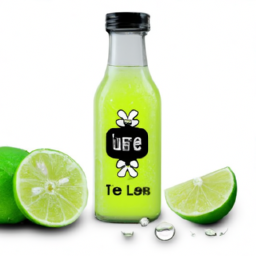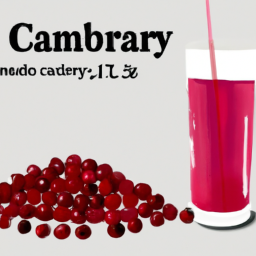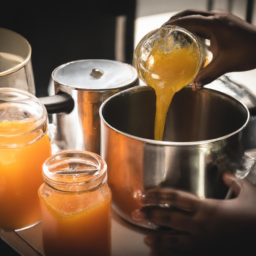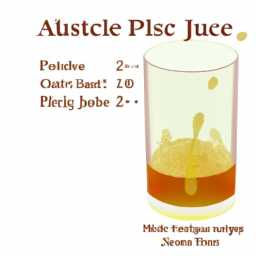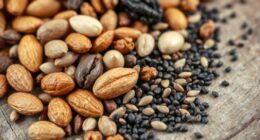As someone who enjoys adding fresh lime juice to both my cooking and cocktails, I frequently think about how long it will last when kept in the refrigerator. The length of time it stays good depends on factors like the quality of the lime, how it’s stored, and the temperature of the fridge.
In this article, I will explore the shelf life of fresh lime juice and provide tips on how to make it last longer. The shelf life of fresh lime juice can be affected by several factors, including its acidity, exposure to air, and the presence of bacteria. It is important to know how long lime juice can last in the fridge to avoid consuming spoiled juice, which can lead to foodborne illness or an unpleasant taste.
In this article, I will provide information on the factors that affect the shelf life of lime juice, how to store it properly, and signs of spoilage to watch out for.
Key Takeaways
- Freshly squeezed lime juice can last up to a week in the fridge if stored in a clean, airtight container at 40°F or below.
- Exposure to air and bacteria can affect the shelf life of lime juice, so it’s recommended to use a juicer or press to minimize bacteria and store in an airtight container.
- Signs of spoilage include sour smell, discoloration, cloudiness, and unpleasant taste.
- Preservatives like ascorbic acid, citric acid, and potassium sorbate can extend the shelf life of lime juice, and freezing can preserve freshness for up to 6 months.
Factors Affecting the Shelf Life of Lime Juice
You’ll want to keep in mind that several factors can impact how long your lime juice will last in the fridge. Factors influencing lime juice spoilage include the quality of the limes used, the method of extraction, and the storage conditions.
The fresher the limes, the longer the juice will last. If the limes are old or damaged, the juice will spoil more quickly. The method of extraction can also affect the shelf life of lime juice. Hand squeezing limes can introduce more bacteria into the juice, which can cause it to spoil faster. Using a juicer or a press can help minimize the introduction of bacteria and extend the shelf life of the juice.
To ensure the best practices for preserving lime juice freshness, it’s essential to store it in a clean container with an airtight lid. Exposure to oxygen can cause the juice to oxidize and spoil more quickly. Keep the juice in the fridge at a temperature of 40°F or below, as higher temperatures can allow bacteria to grow and cause the juice to go bad.
Additionally, it’s best to use freshly squeezed lime juice within a week of extraction for optimal taste and quality. By following these guidelines, you can extend the shelf life of your lime juice and enjoy its freshness for longer periods of time.
Now, let’s move on to the next section and discuss how long fresh lime juice can last in the fridge.
How Long Can Fresh Lime Juice Last in the Fridge?
Feeling thirsty and in the mood for a zesty kick in your drink? Check the fridge for that tangy liquid waiting to be squeezed into your glass. Freshly squeezed lime juice can last up to a week when stored properly in the fridge. It is important to note that the shelf life of lime juice can vary depending on various factors, such as the method of extraction and storage.
To maximize the shelf life of your lime juice, store it in an airtight container and keep it refrigerated. If you have leftover lime juice, there are many ways to use it! You can use it as a marinade for meats, add it to your water for a refreshing drink, or mix it with honey for a sore throat remedy. Drinking lime water daily can also have numerous benefits, such as boosting your immune system and aiding in digestion. However, it is important to always check for signs of spoilage before consuming.
Without a doubt, it is crucial to identify the signs of spoilage before consuming lime juice. In the next section, we will discuss the telltale signs that your lime juice is no longer safe to consume.
Signs of Spoilage
If your lime juice has been left out at room temperature for too long, it may start to develop a sour and off-putting smell, indicating spoilage. Common contaminants such as bacteria and mold can grow in the juice, leading to discoloration, cloudiness, and an unpleasant taste.
To avoid spoiling your lime juice, it’s important to store it properly in the fridge at a temperature below 40°F. Proper storage can help extend the shelf life of your lime juice. Store it in an airtight container and keep it away from other foods that may contaminate it.
If you notice any signs of spoilage, discard the juice immediately.
In the next section, we’ll discuss some useful tips for storing lime juice to ensure it stays fresh for as long as possible.
Tips for Storing Lime Juice
When it comes to storing lime juice, I’ve found that using airtight containers is crucial to preserving its freshness. Additionally, adding preservatives like citric acid or vitamin C can help extend its shelf life.
If you want to keep lime juice on hand for an even longer period of time, freezing it in ice cube trays is a great option.
Using Airtight Containers
To keep your fresh lime juice fresh for a longer period of time, you should store it in airtight containers. Airtight containers provide a number of benefits that other storage options might not.
Here are four reasons that using airtight containers is the best way to store lime juice:
-
Prevents oxidation: Lime juice can quickly lose its flavor and nutritional value due to oxidation. Airtight containers prevent exposure to air, which slows down the oxidation process.
-
Blocks light: Lime juice stored in clear containers can be exposed to light, which can cause the breakdown of nutrients and flavor. Airtight containers are typically opaque, which blocks out harmful light.
-
Keeps out moisture: Moisture can cause lime juice to spoil quickly. Airtight containers create a dry environment that keeps the juice fresh for a longer time.
-
Easy to transport: Airtight containers are perfect for transporting lime juice. They’re leak-proof and can be safely transported without spilling.
By using airtight containers, you can keep your fresh lime juice fresh for a longer period of time. However, if you want to store it for an even longer period, you may need to add preservatives to the juice.
Adding Preservatives
Now that we know that using airtight containers can help preserve the freshness of lime juice in the fridge, let’s explore another option: adding preservatives.
Preservative options include ascorbic acid (vitamin C), citric acid, and potassium sorbate. These preservatives can help extend the shelf life of lime juice by inhibiting the growth of bacteria, yeast, and molds. However, it’s important to note that the effectiveness of preservatives may vary depending on the type and concentration used, as well as the storage conditions.
It’s also important to follow instructions carefully when adding preservatives to avoid overuse or underuse, which can affect the taste and safety of the juice. With the right preservative and proper storage, lime juice can last even longer in the fridge, giving you more time to enjoy its fresh flavor.
As we’ve discussed, both airtight containers and preservatives can help prolong the shelf life of fresh lime juice. But what if you need to store it for even longer? In the next section, we’ll explore the option of freezing lime juice for extended storage.
Freezing Lime Juice
If you’re craving the zesty taste of lime in your drinks or dishes all year round, have you considered freezing your excess lime juice for future use? Freezing lime juice is a great way to preserve its freshness and extend its shelf life.
Simply pour your fresh lime juice into an airtight container, leaving some space at the top to allow for expansion as it freezes. Then, label the container with the date and freeze it for up to six months.
Frozen lime juice can be used in many creative ways, from adding a citrusy kick to cocktails and smoothies to enhancing the flavor of marinades and dressings. You can also use it in recipes that call for lime juice, such as salsa or ceviche.
Alternatively, if you don’t want to freeze your lime juice, you can try other alternatives such as adding preservatives or using a vacuum sealer to remove air from the container. These methods can also help to extend the shelf life of your lime juice and keep it fresh for longer.
Freezing lime juice is a simple and effective way to make sure you always have fresh lime juice on hand. However, if you’re looking for more ways to make your lime juice last longer, there are other steps you can take. Stay tuned to learn about some handy tips and tricks for extending the shelf life of your lime juice.
How to Make Lime Juice Last Longer
In my experience, using vinegar and blanching limes are effective ways to make lime juice last longer. By adding a small amount of vinegar to the lime juice, you can help prevent the growth of bacteria and mold.
Blanching the limes before juicing them can also help extend the juice’s shelf life by killing off any bacteria on the surface of the fruit.
Using Vinegar
Adding a dash of vinegar to your fresh lime juice can help extend its shelf life in the fridge, keeping it fresh and tangy for longer. Vinegar has antimicrobial properties that make it an effective natural preservative for food. Just mix a teaspoon of vinegar into a cup of lime juice before storing it in the fridge.
You can use any type of vinegar, but white vinegar is the most commonly used for preserving lime juice. Apart from being used for cleaning, vinegar is also a great ingredient for preserving lime juice. This is because it helps to inhibit the growth of bacteria and fungi that can cause spoilage.
So, if you want to make your fresh lime juice last longer in the fridge, adding vinegar is a simple and effective method. Now, let’s move on to the next topic of blanching limes to keep them fresh.
Blanching Limes
To keep your fresh lime juice from spoiling quickly, you should try blanching the limes before juicing them. Blanching benefits the limes by killing any bacteria on the surface and softening them, making it easier to extract the juice. This technique involves briefly dipping the limes in boiling water for a few seconds, then immediately transferring them to an ice bath to stop the cooking process.
Blanching your limes before juicing them not only helps to preserve the freshness of the juice, but it also enhances the flavor and aroma. The heat breaks down the enzymes in the lime, allowing the natural oils to be released and intensifying the citrusy scent. To better understand the benefits of blanching, consider the table below, which shows a comparison between freshly squeezed lime juice from blanched and unblanched limes.
| Unblanched Lime Juice | Blanched Lime Juice | |
|---|---|---|
| Color | Slightly yellowish | Bright green |
| Aroma | Mild | Strong |
| Flavor | Tart and bitter | Sweet and tangy |
| Freshness | Lasts up to 3 days | Lasts up to 5 days |
Now that you know the benefits of blanching limes before juicing, you can experiment with this technique to see how it affects the freshness and taste of your lime juice. However, if blanching is not your preferred method, there are alternative storage methods that you can try to extend the shelf life of your lime juice.
Alternative Storage Methods
Storing fresh lime juice in an airtight container with a squeeze of lemon or lime can help prolong its shelf life. Another method to keep lime juice fresh for a longer period is vacuum sealing. This technique removes air from the container, which reduces the amount of oxygen that can cause the juice to spoil. Citrus preservatives, such as ascorbic acid or citric acid, can also be added to the juice to extend its shelf life.
It’s important to note that even with these methods, lime juice will eventually lose its freshness and flavor. Therefore, it’s best to use it within a week or two of storage.
In the next section, we’ll discuss how to incorporate fresh lime juice into various recipes.
Using Lime Juice in Recipes
When I use lime juice in my recipes, I find that it adds a zesty and refreshing flavor. Lime juice can be used in various beverages, such as margaritas or limeade, to give them a tangy twist.
It’s also a great ingredient for marinades and dressings, as it helps tenderize meats and adds a citrusy kick to salads. Additionally, lime juice can be used in baking, particularly for desserts like key lime pie or lime-flavored cakes.
Beverages
You’ll want to keep your cold beverages stocked with fresh lime juice that adds a zesty punch to your drinks like a squeeze of sunshine. Beverage recipes can benefit from the tartness and acidity of lime juice, which can balance out sweetness and add complexity to flavors.
Here are a few ways to incorporate lime juice into your beverages:
- Add a splash to sparkling water for a refreshing and healthy alternative to soda.
- Use lime juice to make a classic mojito or margarita for a tropical and festive cocktail.
- Mix lime juice with honey and hot water for a soothing and immune-boosting drink.
- Combine lime juice with coconut water for a hydrating and electrolyte-packed beverage.
While lime juice can add a lot of flavor to your drinks, it’s important to remember that it can also spoil quickly. It’s best to use fresh lime juice within a few days of squeezing to ensure its quality and safety.
In the next section, we’ll explore how lime juice can also be used in marinades and dressings to elevate your meals.
Marinades and Dressings
Enhance the flavor of your meals with tangy and zesty marinades and dressings that incorporate the vibrant taste of lime. Lime juice is a versatile ingredient that can add a burst of acidity to any dish, making it a popular choice for marinating meats and creating salad dressings. However, it is important to know how long you can store fresh lime juice in the fridge before it loses its potency.
To make the most out of your lime juice, it is recommended to use it within a week of squeezing. When storing lime juice, make sure to keep it in an airtight container in the fridge to prevent oxidation and bacterial growth. Here’s a table to help you determine how long your lime juice can last in the fridge:
| Type of Lime Juice | Refrigerator Shelf Life |
|---|---|
| Freshly squeezed | 1 week |
| Store-bought | 2-3 months |
By using fresh lime juice, you can elevate the flavor of your marinades and dressings. If you want to make sure that your lime juice lasts longer, consider freezing it in an ice cube tray for future use. Now that you know how to keep your lime juice fresh, let’s move on to the next section about baked goods.
Baked Goods
Baked goods are a staple in many households, with Americans consuming an average of 19.5 pounds of cookies per year according to a study by the USDA. While lime juice may not immediately come to mind when thinking about baked goods, it can be a creative addition to many recipes.
The acidic tang of lime juice can add a burst of flavor to sweet treats like cupcakes and muffins, while also balancing out the richness of butter and sugar. When incorporating lime juice into baked goods, it’s important to consider flavor pairings. Lime pairs well with other citrus fruits like lemon and orange, as well as tropical flavors like coconut and pineapple.
It can also complement spicy flavors like ginger and chili, adding a refreshing contrast to the heat. Whether used in a glaze, frosting, or directly in the batter, lime juice can bring a unique twist to traditional baked goods. As we move into discussing the health benefits of lime juice, it’s important to note that incorporating it into baked goods may not offer the same benefits as consuming it fresh.
However, using lime juice in moderation can still provide a burst of flavor without adding excess sugar or calories.
Health Benefits of Lime Juice
Did you know that consuming lime juice regularly can provide numerous health benefits? Here are five benefits of regularly consuming lime juice:
- Lime juice has natural detoxifying properties that can help cleanse the liver and flush out toxins from the body. This makes it a great choice for detoxing.
- Lime juice is rich in vitamin C, which is essential for healthy skin. It can help reduce acne, wrinkles, and other skin blemishes, making it perfect for improving skin health.
- Lime juice is loaded with antioxidants that can help strengthen the immune system and protect the body against infections and diseases. This makes it a great choice for boosting the immune system.
- Lime juice can help stimulate the digestive system and alleviate digestive issues such as constipation and bloating. This makes it a great choice for improving digestive health.
- Lime juice can help boost metabolism and aid in weight loss. This makes it a great choice for weight loss.
When it comes to using lime juice in recipes, it’s important to note the difference between lime juice and lime concentrate. Lime juice is freshly squeezed and contains no added sugars or preservatives, while lime concentrate is a more concentrated form of lime juice that often contains added sugars and preservatives. It’s always best to opt for fresh lime juice when possible to reap the most health benefits.
Lime Juice vs. Lime Concentrate
When it comes to making lime juice-based recipes, there are two main options: fresh lime juice and lime concentrate. As someone who enjoys cooking and experimenting in the kitchen, I’ve explored the nutritional and flavor differences between the two.
In this discussion, I’ll share my findings on the unique qualities of each and how they can impact the taste and health benefits of your dishes.
Nutritional Differences
You might be surprised to know that fresh lime juice actually loses up to 25% of its vitamin C content within the first 24 hours of being refrigerated. This is due to the natural oxidation process that occurs when the juice is exposed to air.
Lime juice processing and preservation methods can help to slow down this process, but it’s important to note that the longer the juice is stored, the more nutrients it will lose. When it comes to nutritional differences between fresh lime juice and lime concentrate, it’s important to note that lime concentrate often contains added sugars and preservatives, which can decrease its nutritional value. Additionally, the processing methods used to create lime concentrate can also result in a loss of nutrients.
Overall, while both fresh lime juice and lime concentrate can provide some nutritional benefits, fresh juice is generally considered to be the healthier option. Moving on to flavor differences, it’s important to note that fresh lime juice has a brighter, more complex flavor profile than lime concentrate, which can often taste flat or overly sweet.
Flavor Differences
Experience the full, vibrant flavor of freshly squeezed lime juice, which can’t be replicated by lime concentrate. Lime juice can add a zesty, tangy kick to a variety of dishes, from marinades and dressings to cocktails and desserts.
When it comes to flavor preferences, some people may prefer the sweeter taste of bottled lime juice, while others crave the tartness of freshly squeezed. If you’re looking to impress your taste buds and elevate your culinary creations, opt for fresh lime juice.
Here are some culinary uses for fresh lime juice that showcase its flavor and versatility:
- Use it as a base for marinades and sauces for meats and seafood.
- Squeeze it over grilled vegetables or fruits to add a bright, citrusy flavor.
- Add it to salad dressings and dips for a tangy twist.
- Mix it with honey or agave nectar to create a refreshing and healthy drink.
Whether you’re a professional chef or a home cook, fresh lime juice can take your dishes to the next level. So, the next time you’re at the grocery store, grab a bag of limes and experiment with new flavor combinations.
Frequently Asked Questions
Can you freeze fresh lime juice?
Yes, you can freeze fresh lime juice. I recommend freezing it in ice cube trays for easy portioning. Another option is to make a lime concentrate by reducing the juice over low heat until it thickens, then freezing it.
How long can lime juice last outside of the fridge?
Leaving lime juice at room temperature is like a ticking time bomb. To avoid disaster, store in the fridge for up to a week. For longer preservation, canning or vacuum sealing is recommended.
Can you mix lime juice with other citrus juices for longer shelf life?
Combining lime juice with other citrus juices can extend lime juice preservation. However, the resulting mixture’s shelf life depends on the other citrus juice’s acidity, freshness, and storage conditions. It’s best to refrigerate the mixture and consume within a few days.
What are some common recipes that use lime juice?
Hey there! If you’re looking for some lime juice recipes, I’ve got you covered. Try adding it to guacamole for a zesty kick or using it as a substitute for lemon juice in ceviche. Cheers!
Are there any negative health effects associated with consuming too much lime juice?
Consuming excessive amounts of lime juice can lead to negative health effects such as tooth erosion and stomach upset. However, moderate consumption can have benefits such as aiding in weight loss and improving skin health due to its high vitamin C content.
Conclusion
In conclusion, the shelf life of fresh lime juice in the fridge is affected by various factors such as the storage temperature, container, and air exposure. Generally, it can last for up to a week, but it’s important to check for signs of spoilage before using it.
To prolong its freshness, you can store lime juice in an airtight container, add a layer of oil on top, or freeze it in ice cube trays.
While lime juice may seem like a simple ingredient, it offers numerous health benefits and can add a burst of flavor to your dishes. Whether you’re making a refreshing drink or adding it to a marinade, knowing how to store and use lime juice properly can make a big difference in the taste and quality of your food.
So, next time you have some fresh limes on hand, give lime juice a try and enjoy its zesty goodness.
Ilana has been a vegan for over 10 years. She originally made the switch for health reasons, but soon found herself becoming more and more passionate about the ethical and environmental implications of a vegan lifestyle. Ilana is the author of The Graceful Kitchen, a blog all about veganism. She loves to cook up delicious and nutritious vegan meals, and share her recipes with others who are interested in leading a cruelty-free life. Ilana is also a strong advocate for using whole foods as the foundation of a healthy diet, and believes that going vegan is one of the best ways to achieve this.
